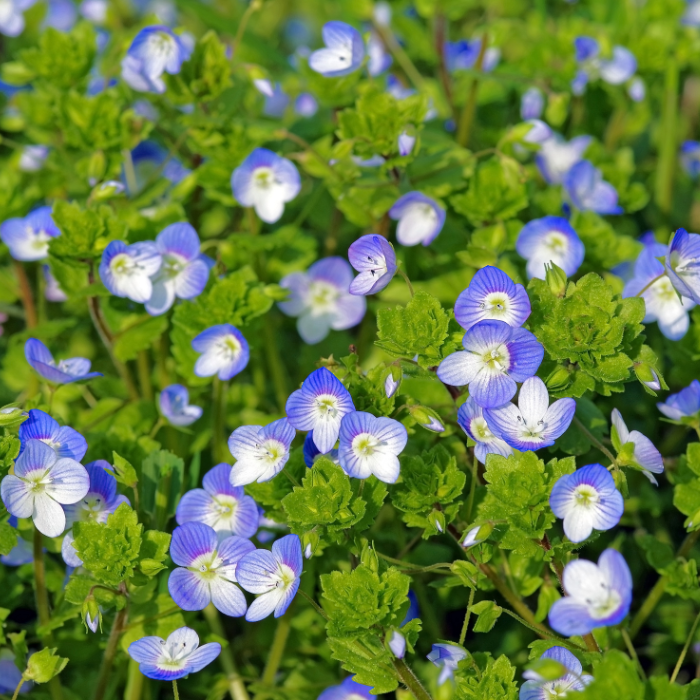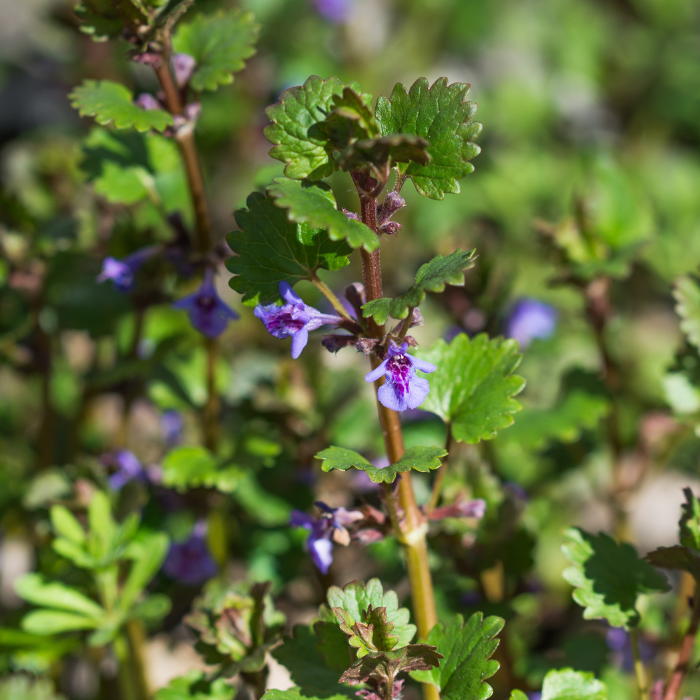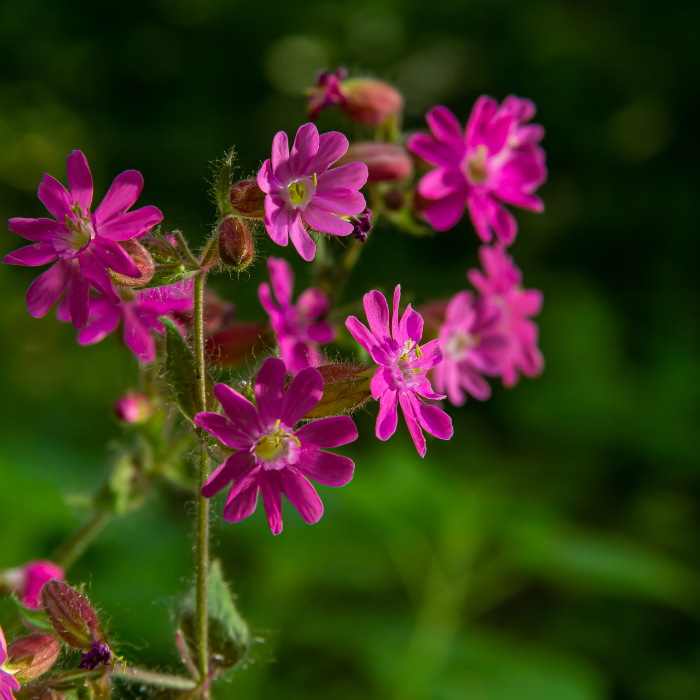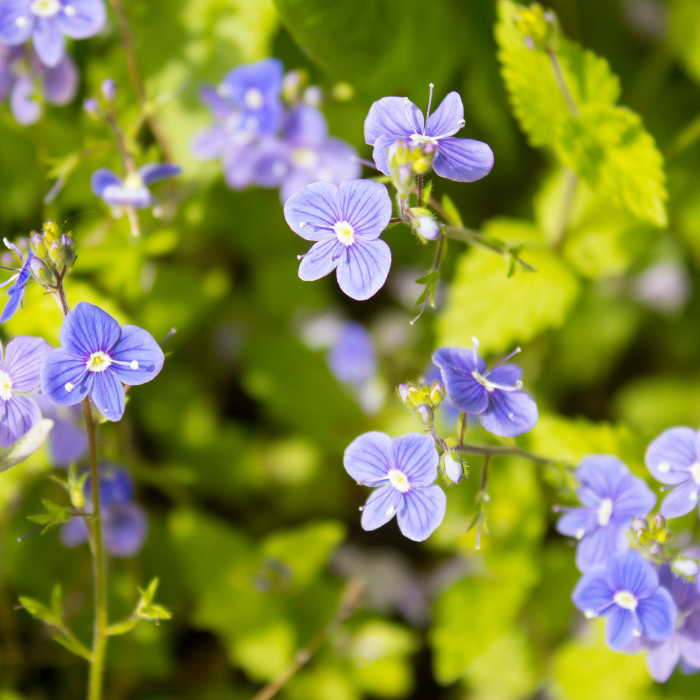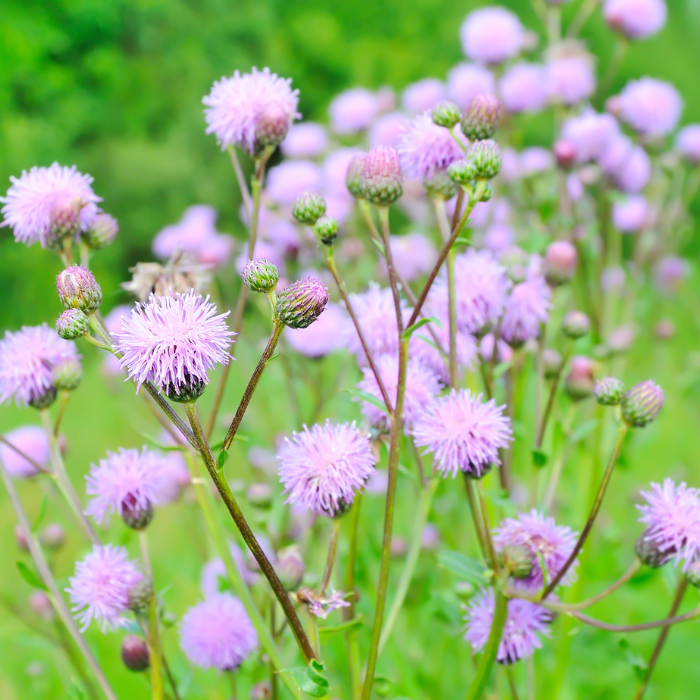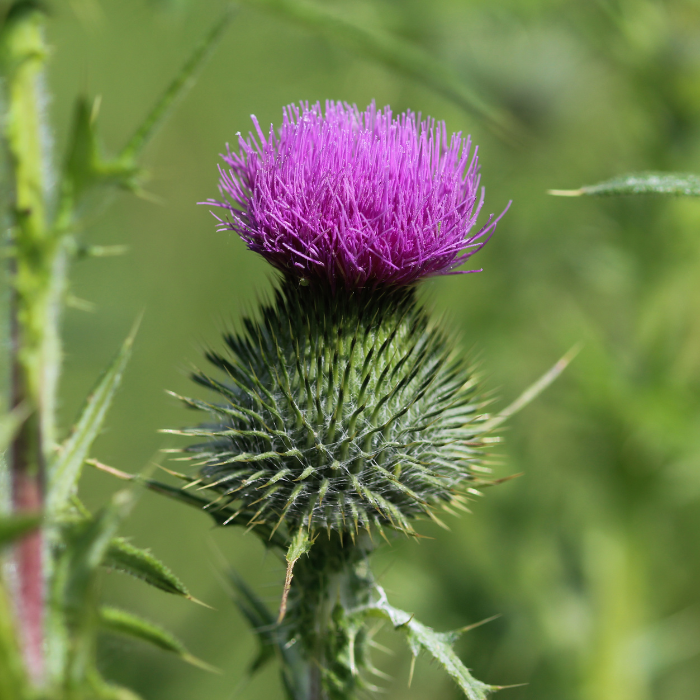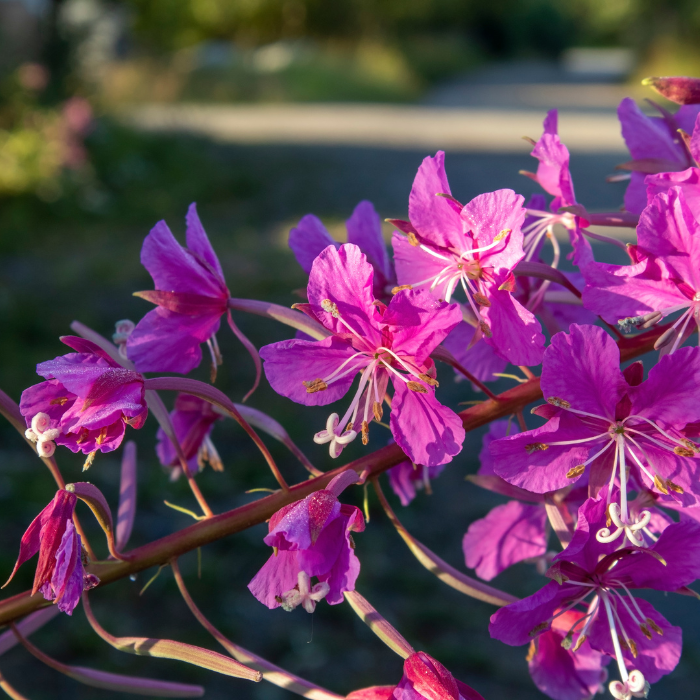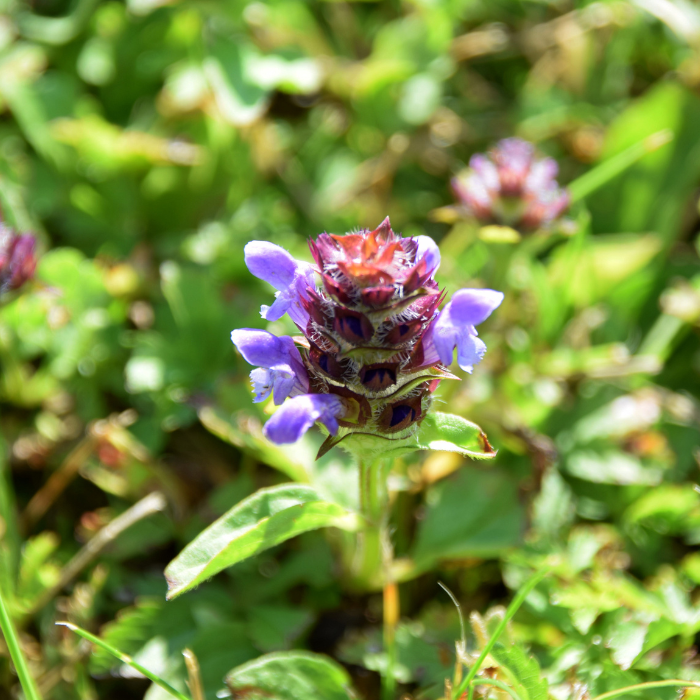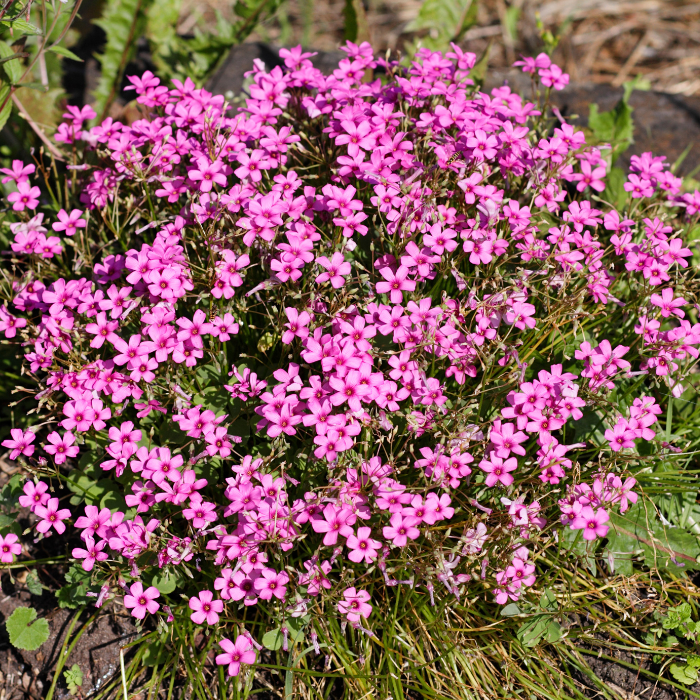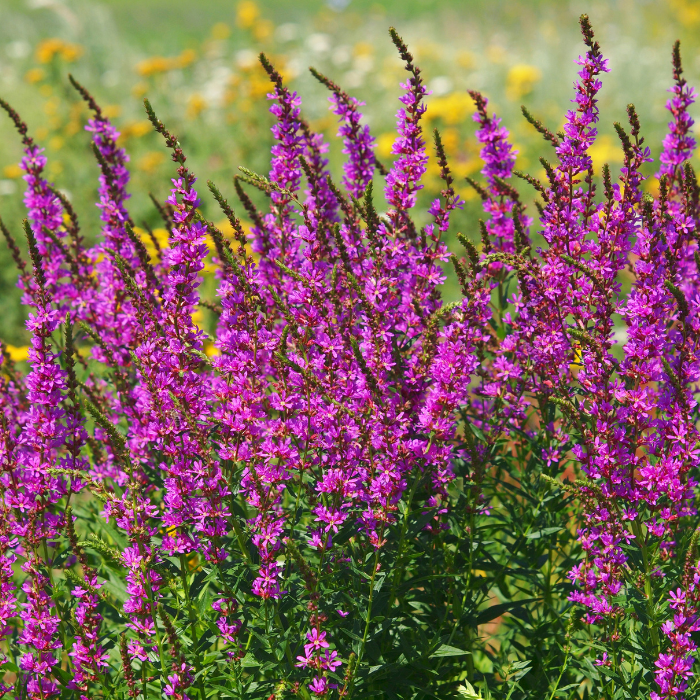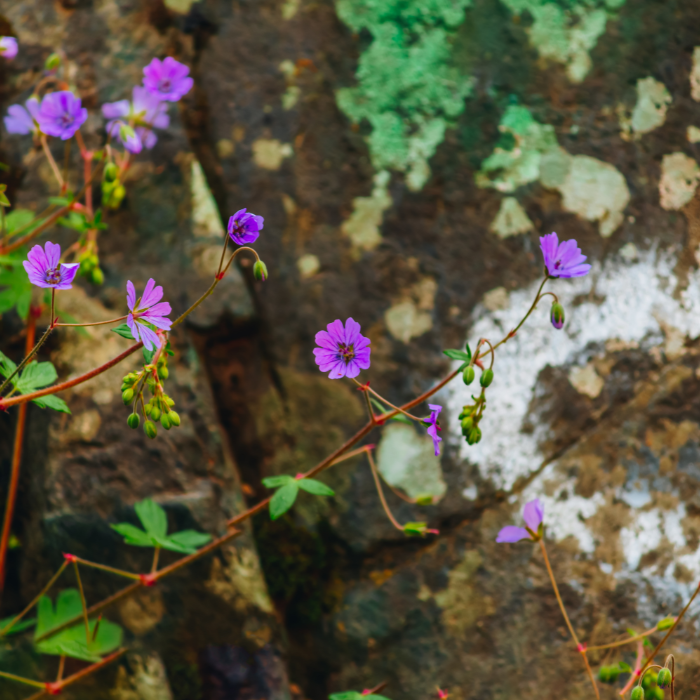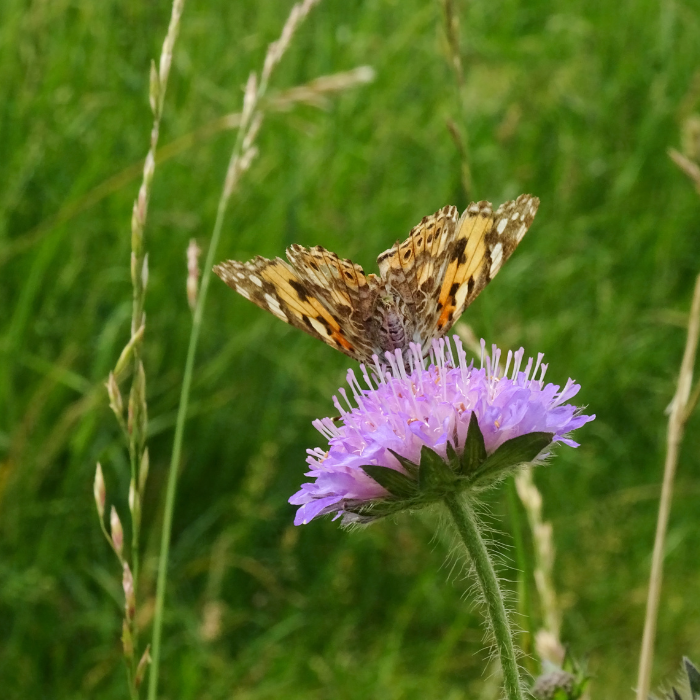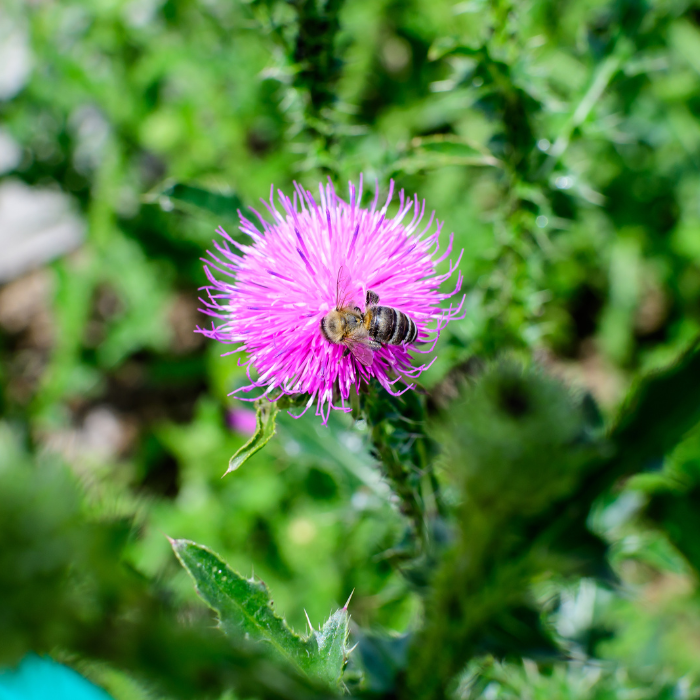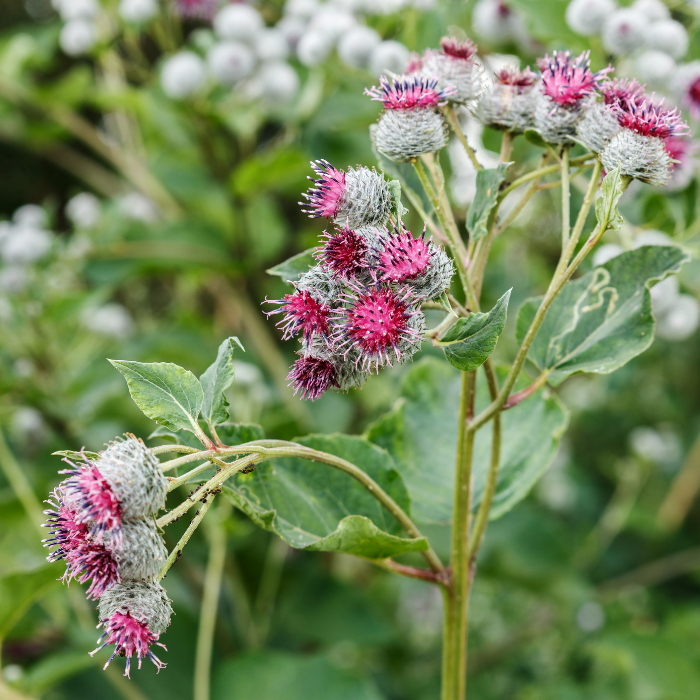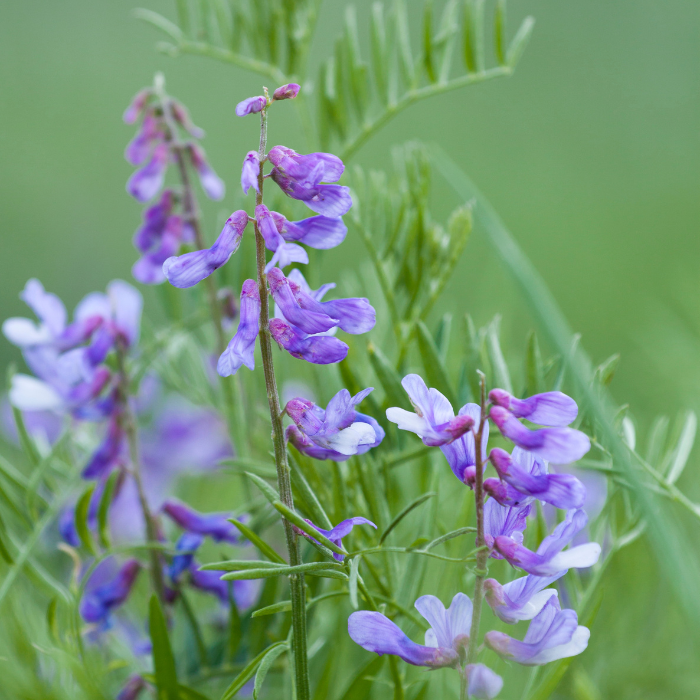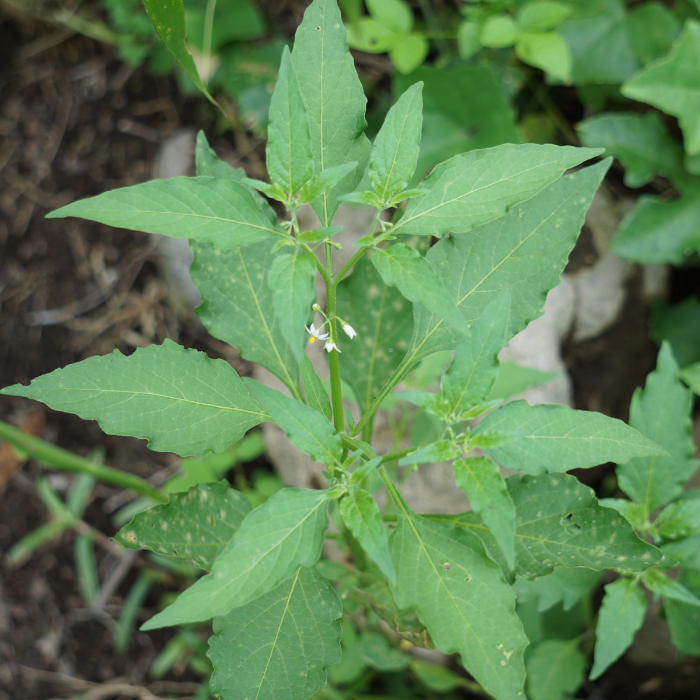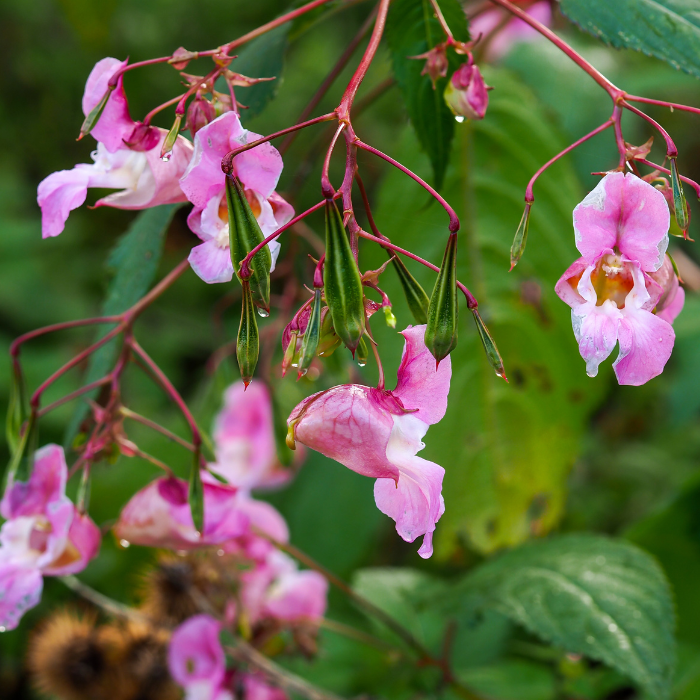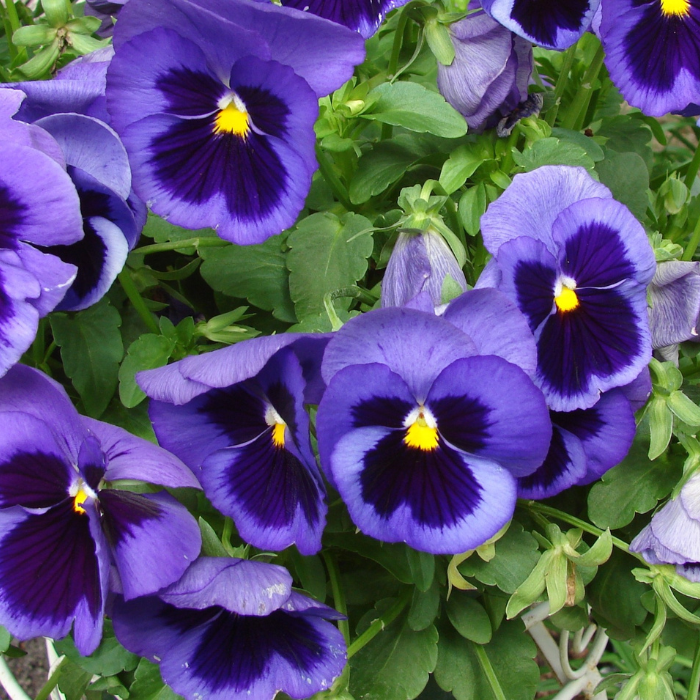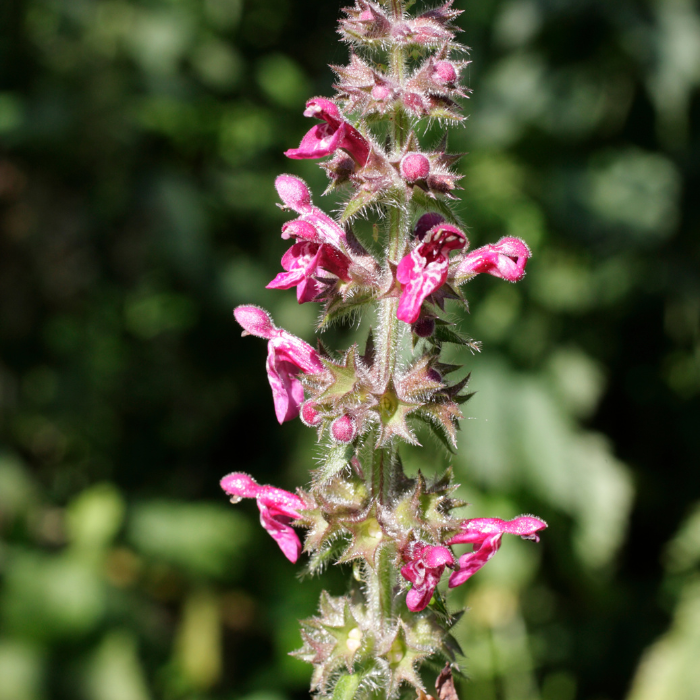
Weeds With Purple Flowers
No matter how skilled a gardener you are, weeds can be a constant source of aggravation. They pop up everywhere – in our borders, beds, and pristine lawns!
If there was a single type of weed, dealing with them wouldn’t be so difficult. But that’s not the case, is it? In fact, there are approximately 250,000 species of plants that we consider weeds across the world, and a large portion of these have purple flowers.
You see, the colour purple is particularly alluring to pollinators. Unfortunately, this makes weeds with purple flowers particularly prolific, as they have a better chance of pollination.
In this blog post, we’ll uncover the 25 weeds with purple flowers you’re most likely to see in your UK garden. Being able to identify them will bring you one step closer to removing them from your garden for good.
1. Common Field Speedwell (Veronica persica)
Ever seen a short, low-growing plant with delicate, purple flowers sprawling across your lawn, garden bed, or in the local fields? Chances are, this is Common Field Speedwell. Common Field Speedwell’s most identifiable feature is undeniably its violet-blue flowers; they have a distinctive white centre that’s hard to miss.
These plants can wreak havoc in gardens and lawns, as their creeping stems make it difficult to eradicate once they’re established. This plant often outcompetes grass and other plants for nutrients, water, and sunlight, hindering the growth of these more favourable flora!
2. Purple Clover (Trifolium pratense)
You’ll often see Purple Clover growing in meadows, along roadsides, and in open areas. It tends to invade these spaces, competing with local grass species and affecting crop yields. Due to this, it’s considered a weed in agricultural fields.
But you may also see Purple Clover popping up in your lawn or wildflower patch from time to time. However, it’s not considered a weed in gardens. In fact, due to its value to pollinators, many gardeners like to see purple clover in their gardens.
3. Ground Ivy (Glechoma hederacea)
Ground Ivy, also known as Creeping Charlie, is a perennial plant native to the UK and surrounding areas in Europe. It’s a member of the Mint family, and if you’ve ever grown Mint, I don’t need to tell you how fast-growing this can be! It’s easy to identify Ground Ivy as a member of the Mint family because it has similar-looking leaves that release a scent when crushed, and they both possess square stems.
4. Red Campion (Silene dioica)
Red Campion is another UK native that thrives in our temperamental climate. Red Campions love the shaded ground of woodlands, and you’ll commonly find it growing in roadside verges, fields, ditches and hedgerows.
It has distinctive pink-red flowers that verge on purple that pollinating insects like hoverflies, bees, and butterflies simply love. If you find it growing in a woodland, it’s often a sign that the wood is ancient, which can make your time there feel particularly special.
5. Germander Speedwell (Veronica chamaedrys)
Germander Speedwell’s flowers are similar in ways to the beloved Pansy, as they have a similar shape and colour. However, that’s where the similarities end. While many of us (myself included) love to show off Pansies in our gardens, few of us feel so positively about Germander Speedwell. Despite this plant’s understated appearance, it can quickly invade our turf and lawns. And once it’s there, it’s tricky to get rid of.
6. Creeping Thistle (Cirsium arvense)
Creeping Thistle has been considered a weed in the UK since 1959 because it spreads and produces large colonies rapidly. These then soak up all of the essential resources, such as light, nutrients, and water, making them unavailable for other plants.
But if you love goldfinches, you may choose to keep the Creeping Thistle around. The seeds from Thistles make up ⅓ of a goldfinch’s diet. Greenfinches, redpolls, siskins, and linnets also love Thistles.
7. Spear Thistle (Cirsium vulgare)
Much like its relative, the Spear Thistle is a big winner with UK native birds. Goldfinches are its most frequent visitors, but butterflies like the small copper also appreciate the Spear Thistle for its abundance of nectar.
Despite this, the Spear Thistle is considered a “noxious weed” here. It’s so unpopular that it is illegal to grow it in your garden, and you could be due a fine of up to £2,500 if you’re found growing it. Its lack of popularity is due to the severe harm it can cause to crops and vegetation.
8. Rosebay Willowherb (Chamaenerion angustifolium)
Rosebay Willowherb is a tall plant that produces vibrant pink-purple flowers atop long stems. It grows in woodlands, wasteland, scrub, and amongst rocks. Yet, these areas aren’t of the most concern – it’s when Rosebay Willowherb invades our gardens that it becomes a serious weed.
Rosebay Willowherb spreads using underground stem networks. These stems can grow 1 metre per season, so if these weeds aren’t kept under control, they’ll likely remove all of the nutrients from your soil, particularly if you have a small garden.
9. Self-Heal (Prunella vulgaris)
Self-Heal is a very common weed in the UK and particularly loves an unkempt lawn. Like Rosebay Willowherb, Self-Heal produces an abundance of underground stems that spread across large areas of soil quickly.
You can identify Self-Heal by looking at its stems and flowers – it produces upright flowering spikes and has hairy bracts. It has 5-petaled purple flowers that show up from May to October.
10. Pink Sorrel (Oxalis articulata)
Pink Sorrel is considered a weed by some in specific areas. For example, in our gardens, Pink Sorrel can run riot, spreading over large areas until it completely takes over other plants. Because of this, it’s important to remove Pink Sorrel as soon as you see it in your garden. If you like the look of it, you can keep it contained in a pot – this will stop it from spreading.
11. Purple Loosestrife (Lythrum salicaria)
Purple Loosestrife is a hardy perennial plant that’s native to the UK and surrounding European countries. It loves moist soil and even shallow water, so it naturally favours riverbanks, streams, pond margins, and ditches.
Purple Loosestrife is slightly different to the others on this list as it’s not considered invasive in the UK…yet. It’s an extremely vigorous grower and is classed as highly invasive in Europe, so it likely won’t be long before it’s added to the UK’s list of invasive plants, too.
12. Dove’s Foot Cranesbill (Geranium molle)
Dove’s Foot Cranesbill is a hardy plant in the Geranium family. This plant is particularly well-known as a lawn weed due to its unique, exceptionally annoying explosive seed pods, which can throw seeds far and wide.
So, if you find Dove’s Foot Cranesbill in your grass, it’s worth trying your very best to eradicate it before it seeds. Otherwise, you could have hundreds of these tricky weeds on your hands.
13. Field Scabious (Knautia arvensis)
Field Scabious is a pretty wildflower that produces delicate flowers that boast a pale lilac colour. These sit atop thin, dainty stems. So far, this plant sounds like a delight, and mostly it is.
Some believe Field Scabious to be a beneficial plant, as it’s pleasant on the eyes and attracts bees, butterflies, moths, and beneficial insects. However, this plant can outcompete native plants for resources when there are few predators and diseases to keep it under control.
14. Musk Thistle (Carduus nutans)
The Musk Thistle frequently invades disturbed areas and grassy hillsides, particularly in the Leicestershire and Rutland areas. It frequently outcompetes native plants in these regions, making it quite a nuisance!
This biennial plant grows to around 1.8 metres tall and has vibrant, purple flowers. It sports the characteristic thistle appearance, with spiny bracts and those distinctive thistle flowers.
15. Common Burdock (Arctium lappa)
Common Burdock is known for its incredibly large, egg-shaped leaves that can spread up to 1.2 metres in size. In July, it produces tall purple flowers that look similar to thistles. These stick around over the summer months before dying back in September.
Before the flowers die back, they scatter their seeds across surrounding areas. And if that weren’t enough of an issue, their prickly burs also cling onto clothes and fur. With these two methods combined, Common Burdock can quickly become a problem.
16. Bird Vetch (Vicia cracca)
Bird Vetch, also commonly known as Cow Vetch and Tufted Vetch, is a UK-native perennial plant that you’ll likely come across along hedgerows and in meadows and grasslands. Yet, one of the qualities that lead to its invasiveness is its hardiness – it’s not fussy where it lives and can handle varied soil conditions.
Bird Vetch is a hit among the animals – cattle eat it as a forage crop, and birds, bees and butterflies love it, too!
17. Black Nightshade (Solanum nigrum)
Black Nightshade is a common weed in the UK, particularly wherever vegetables and spring crops grow. It can also be a pretty prolific weed in gardens due to its bushy growth habit and ability to self-fertilise.
While this plant poses a problem in many areas of the UK, it’s less of a concern up north and tends to dislike areas of higher altitude.
18. Forget-Me-Not (Myosotis)
Many of you will be surprised to see the Forget-Me-Not on this list. Why? Because it’s still a common flower that you can even buy seeds for in most garden centres! So, what makes it a weed? Well, they tend to take over whatever space they’re growing in, particularly if they’re given shade and moist soil.
But they don’t pose too much of a problem as far as weeds go. To remove them, all you have to do is pull them out, ensuring you take the root network with it.
19. Himalayan Balsam (Impatiens glandulifera)
Himalayan Balsam is considered a weed in the UK due to its invasive and aggressive growth habit. It was introduced here as an ornamental plant but has since spread rapidly. It also produces its leaves earlier in the year than many native plants, which gives it a competitive advantage for resources like light and nutrients. As a result, it disrupts our local ecosystems.
20. Wild Violets (Viola odorata, Viola sororia, and other species)
When it comes to Wild Violets, the crowd is split – they’re loved by some but regarded as a tiresome menace by others. They’re often considered weeds because they spread quickly and establish in a lawn with ease.
Some of the varieties that cause the most agro in the UK are:
- Common Dog Violet (Viola riviniana)
- Common Blue Violet (Viola sororia)
- Field Pansy (Viola arvensis)
But don’t let you rule out violets altogether. English Violet, Alpine Violet, and the Viola ‘Sorbet’ Series are some beautiful varieties that won’t take over your garden.
21. Purple Dead Nettle (Lamium purpureum)
Purple Dead Nettle is an opportunistic plant that will live in whatever space it can get. It adapts to a wide range of soil types and will quickly colonise any area, such as neglected or disturbed spaces. It rapidly takes up residence in a garden, lawn, or other natural areas and can be a real pain to remove once it’s established.
22. Deadly Nightshade (Atropa belladonna)
Deadly Nightshade isn’t just a danger to your garden; it’s also a hazard to your health. It’s categorised as a weed due to its ability to spread quickly but also causes potential harm to humans and animals. All parts of this plant are toxic, putting Deadly Nightshade in the top 5 most poisonous plants in the UK.
It’s safe to say you’ll need to wear protective gear when removing this one from your garden!
23. Hedge Woundwort (Stachys sylvatica)
Some people hate Hedge Woundwort, but I have a different opinion than most. To me, Hedge Woundwort is a beautiful wildflower that can stay in my garden as long as it wants to. This is mostly down to its flowers – they have a deep reddish-purple colour and tubular shape and are densely arranged in spikes at the top of the stems.
I love the flowers for their hood-like upper lip and three-lobed lower lip, almost giving the impression of some form of wild orchid. It’s not just me that loves them – the bees agree with me!
24. Viper’s Bugloss (Echium vulgare)
Viper’s Bugloss is originally from Europe and western and central Asia but was introduced to the UK in the 1880s as an ornamental plant. This plant can go unnoticed most of the year, but it becomes apparent in summer when tall spikes adorned with many purple-blue flowers appear. However, most people like this plant and it’s not considered an awful weed just yet. However, because of its ability to self-seed (and quickly, too), it’s important to keep an eye on it.
25. Thyme-Leaved Speedwell (Veronica serpyllifolia)
Thyme-Leaved Speedwell is a perennial plant that’s native to the UK. Its subspecies, serpyllifolia, is a common weed on light soils and tends to love chalky ground. It may also take up residence in your garden, causing trouble in your lawn, borders, or beds. Yet, the place where you’re most likely to find Thyme-Leaved Speedwell is fields – in 1972-3, Thyme-Leaved Speedwell was found in 50% of fields in the English Midlands.
FAQs
What is the purple stuff growing in my lawn UK?
The purple stuff growing in your lawn in the UK could be a number of things, but it’s most likely to be self-heal. This is a small, low-growing plant that is particularly widespread across the UK. It’s a UK native, meaning that it thrives in our climate and will often use this advantage to take over lawns, rough ground, and grasslands.
What is the invasive purple flower in the UK?
One of the invasive purple flowers in the UK is the Himalayan Balsam (Impatiens glandulifera). Himalayan Balsam is native to the Himalayan region of Asia and was introduced to the UK in the early 19th century as an ornamental plant.
Since then, it has become problematic in the UK’s natural habitats, particularly in moist areas such as riverbanks, alongside streams, and damp woodlands. Its rapid growth and lofty height (2 – 3 metres) means it quickly shades our native plants, reducing their ability to grow and reproduce.
What are the purple tall wildflowers in the UK?
There are several purple tall wildflowers in the UK, including the Spear Thistle, Greater Knapweed, the Marsh Thistle, Foxglove, and Rosebay Willowherb. Purple Loosestrife is another tall plant that produces purple flower clusters that you’re likely to see around the UK. While Purple Loosestrife isn’t considered a weed in the UK just yet, it’s teetering on the edge. Right now, we’d call it a “vigorous” grower in the UK, but elsewhere, it’s considered extremely invasive.
What is the purple flower that grows close to the ground?
When you see a plant with purple flowers crawling across the ground, it’s typically Creeping Speedwell (Veronica repens). This is a low-growing plant that returns year after year. It roots and grows rapidly, quickly forming a mat of purple flowers across the ground. Yet, when it comes to this plant, some gardeners consider it a weed, particularly if it grows in their well-manicured lawn, but others are happy to have such an excellent food source for pollinators in their garden.
